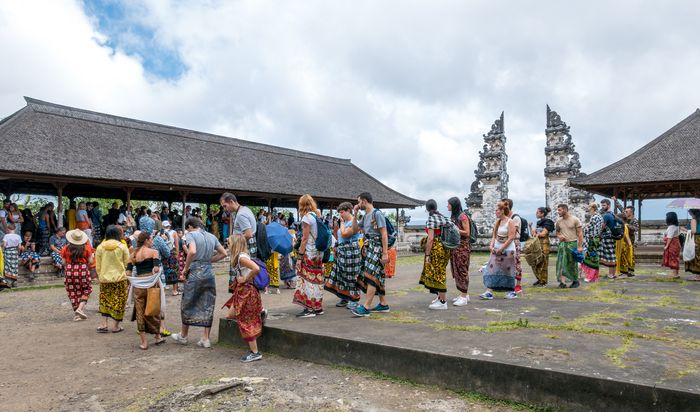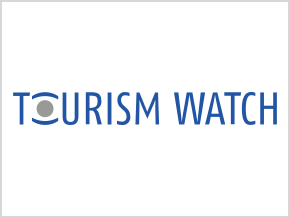In their blogs they write about their experiences in distant lands and provide travel advice. On Instagram or Youtube bloggers share breathtaking, perfectly staged images and reach thousands of people in search of inspiration and information for their travel. In these ways they exert influence on an increasing number of travellers in the choice of their holiday destinations, accommodation, or means of transport. This makes them “influencers“. More and more bloggers are becoming aware of their responsibility, though by far not all of them.
“Followers” in the most literal sense of the word
When 20 years ago a backpacker ”discovered“ a secluded beach during their trip, he or she may have told other backpackers about it. Several years would usually have passed until this ”insider tip“ made it into the Lonely Planets and travellers flocked to the destination in large numbers. Today, however, a single post by an influencer with sufficient outreach may be enough to catapult a certain place to the top of the list of the ”most instagrammable places“ over night. In Canada a sunflower farmer was caught off guard by thousands of visitors after influencers had posted selfies in the sea of blossoms on Instagram. Within a few days his sunflower fields became a popular photo spot for Instagram tourists. Only with the help of the police could the farm be closed in order to prevent further damage to the fields.
The more influencers rave about a place, a street food stall or a hiking trail, the more people want to go there – with all the known consequences for people and nature. The term ”follower“ is then to be taken literally. With the help of so-called geolocation, bloggers, instagrammers and youtubers can locate their destinations and photo sceneries by their exact coordinates. By now, a counter-movement of bloggers and travellers has emerged – though it may still be rather small. They refrain from using geotags or only give very general information on the location in order to protect unique places from being overrun by too many visitors #nogeotags.
The Brazilian couple Tania and Marcelo blogs under the name T + M. Initially, they started to blog in order to share their experiences with their families and friends while travelling around Latin America for two years, working in social institutions. In the meantime, they have come to reach out to more than 45,000 people on Instagram, Facebook and Youtube. They make deliberate use of their outreach in order to make more people aware of sustainable and community-based tourism projects in Latin America. With their posts they want to achieve more than just show beautiful photos. In addition, they always tell stories behind the people and places.
Instagrammability, orchestration, and authenticity
Influencers are usually perceived as particularly authentic by their followers. Many of these influencers present apparently flawless pictures of themselves on beautiful beaches or secluded mountain tops. But this is often only half the truth. Very few of these pictures show the effort, careful orchestration, and post-editing undertaken to produce them.
Under the location “Lempuyang Temple“ more than 70,000 photos can be found on Instagram, most of them showing the same motive: Framed in between a Balinese split-gate, the so-called “Gate to Heaven”, the traveller’s silhouettes are reflected in a pond. Depending on the weather, the majestic volcano Gunung Agung appears in the background. However, the photos do not show that people had to stand in a queue with other Insta-tourists for several hours from early morning. Neither do they show that the silhouettes are not actually reflected by water in the pond, but by a mirror.
Travel for recognition in social media
Ute Kranz resigned from her job and turned her passion into her occupation. In 2013, she launched the travel blog “Bravebird“. Via social media she reaches more than 65,000 people. By now, however, she is repelled by the fact that social media increasingly turning travel into a symbol of lifestyle and status. “You no longer travel just for your own sake, but also for the sake of others watching you lifestyling.”
With their jet set and their perfect images, bloggers significantly contribute to the lists of supposedly ”must see“ places growing longer and longer. “More and more often I also heard in my networks that people were yet to ”do“ country XY and were planning several long-haul trips per year”, says Kranz. Instagram, Facebook and others platforms do not just fuel the trend to travel further away and more often, and for a shorter time, but also the “fear of missing out” (FOMO) – whether it is seeing the Taj Mahal, hiking the Inca Trail, or getting praise and recognition for their selfie in social media.
Taking the lead by setting positive examples
Influencers are part of the problem. However, they can also be part of the solution. Ute Kranz decided not to take any flights in the next few years, neither for business nor for private purposes. For about two years now, she critically reports on some of the impacts of our travel behaviour on her blog, hoping to initiate controversial discussions this way. ”We need a different lifestyle. I am optimistic that there is a lot of change happening in the minds of bloggers and travellers today“, says Ute Kranz. Travel should not be understood as a status symbol to gather praise and recognition in social media. The blogger recommends: Instead of trying to maintain beautiful outward appearances also on holidays and to be liked by others, one should enjoy the moment. Beautiful appearances might generate likes, but won’t give you unique experiences and lasting memories.
Tania and Marcelo deliberately use geotags on Instagram to show new and different perspectives of the same place. They make it a point not to sugarcoat anything they experience in a destination – even if this may at times mean to critically question the ways in which tourism was developed in some regions. They advise their followers and other travellers not to hide behind their smartphones, but to seek encounters with people in the places they visit. Instead of posting aesthetic pictures in social media, travellers should share what they learn from their encounters and what moves them personally during their trips.
Translation from German into English by Christina Kamp.



